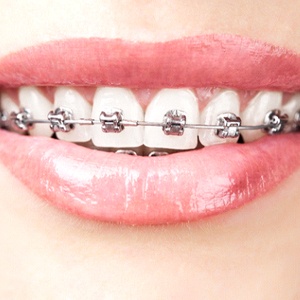Comprehensive Overview to Orthodontics Treatments for Correcting Dental Imbalances
Comprehending the details of each procedure, including their mechanisms, benefits, and potential disadvantages, is crucial in making notified decisions regarding one's orthodontic treatment. As we navigate through the comprehensive overview to orthodontic treatments for remedying dental imbalances, the complex details of each technique will unfold, dropping light on the path toward a harmonious and functional dental positioning.
Orthodontic Procedures Introduction

Normal adjustments and tracking are critical parts of orthodontic therapy to ensure development is on track and to make any kind of essential modifications along the way. By undergoing orthodontic procedures, clients can not just attain a straighter grin but likewise enhance their total dental wellness and feature.
Traditional Braces: How They Function
When considering orthodontic treatments for dental misalignments, typical braces stick out as a tried and true technique for fixing teeth positioning. Standard dental braces include brackets, cables, and bands that collaborate to use constant pressure on the teeth, slowly moving them right into the desired positioning. The brackets are affixed to the teeth using a special adhesive, and the cords are threaded with the braces. By adjusting the stress of the cords, orthodontists can regulate the direction and force related to each tooth, directing them right into proper positioning over time.
As stress is used to the teeth via the braces, the bone surrounding the teeth is improved to sustain the brand-new tooth positions. Clients will certainly need routine changes at the orthodontist's office to make certain the dental braces proceed to apply the appropriate stress for effective teeth movement.
Undetectable Aligners: Cons and pros
Invisible aligners use a very discreet and convenient alternative to conventional dental braces for dealing with oral imbalances. These clear, tailor-made trays are basically unnoticeable when put on, making them an enticing option for individuals seeking a much more visually pleasing orthodontic treatment. One of the key benefits of undetectable aligners is their removability, enabling easier upkeep of dental hygiene contrasted to traditional braces. Patients can get rid of the aligners prior to eating or cleaning their teeth, minimizing the danger of food obtaining embeded the appliance and streamlining the cleaning procedure.

Surgical Orthodontic Options
Surgical treatments in orthodontics existing sensible alternatives for addressing complex dental imbalances that might not be properly resolved through conventional orthodontic treatments. While unnoticeable aligners and conventional braces can correct many orthodontic problems, particular instances call for medical intervention to achieve optimal outcomes. Surgical orthodontic alternatives are commonly advised for extreme malocclusions, substantial jaw disparities, and situations where the underlying bone structure needs alteration to accomplish proper alignment.
One usual medical orthodontic procedure is orthognathic surgical procedure, which entails repositioning the jaws to correct useful problems such as difficulty talking or eating. This surgery is often executed in partnership with an orthodontist who aids line up the teeth prior to and after the treatment. Surgical orthodontics may also entail procedures to expose influenced teeth, eliminate excess gum cells, or reshape the jawbone to create an extra unified facial account.
Before thinking about surgical orthodontic options, patients undertake a comprehensive evaluation to establish the need and prospective advantages of such interventions. review cumming invisalign. While surgery might appear challenging, it can dramatically enhance both the function and aesthetic appeals of the smile in instances where conventional orthodontic therapies fail
Retainers and Post-Treatment Treatment

Post-treatment treatment entails following the orthodontist's directions diligently. This might include proper dental hygiene techniques, attending follow-up appointments, and wearing the retainers as suggested. Failing navigate here to follow post-treatment treatment guidelines can result in relapse, where the teeth slowly relocate back towards their original placements. Regular retainer wear, great oral health, and normal oral check-ups are essential for preserving the outcomes accomplished with orthodontic surgical procedure and making sure the lasting stability of the fixed oral placement.
Conclusion
In conclusion, orthodontic treatments offer different options for remedying dental imbalances. Surgical orthodontic options are offered for extra serious imbalances. Overall, orthodontic treatments can effectively enhance oral health and aesthetic appearance.
As we navigate via the extensive overview to orthodontic treatments for fixing oral imbalances, the elaborate information of each approach will unfold, dropping light on the course toward a useful and harmonious dental placement. - cumming orthodontics
One of the most common orthodontic treatments is the usage of dental braces, which are composed of metal brackets and cables that use mild pressure to gradually move teeth right into the desired setting.When taking into consideration orthodontic treatments for oral imbalances, traditional braces stand out as a reliable approach for correcting teeth positioning. Furthermore, undetectable aligners might not be ideal for complex orthodontic problems that call for more significant teeth motion, as they are commonly advised for mild to modest instances. Retainers are customized orthodontic gadgets made to hold teeth in their corrected positions after the completion of orthodontic treatment.